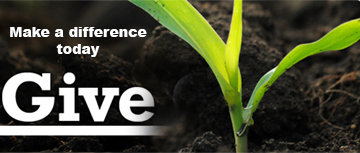Teaching Primary School Pupils About Refugees
Hi everybody, my name is Caroline Cartmill and I am a Primary School Teacher and volunteer at Revive. I have been involved with Revive for several years, but now living in North Wales and working full-time as a teacher, I have been cheering Revive on from afar and managing the social media channels rather than being involved with the daily operations of the organization and its work.
Thanks to my time at Revive, I have become very inspired to spread the message and aims of Revive and similar organisations to people far and wide. I have realised particularly living in a remote area of North Wales, the amount of people who don’t know anything about refugees, asylum seekers or the processes and difficulties they have to go through to be citizens in this country is high. On a regular basis, I am annoyed by the amount of people who refer to refugees as people who steal ‘our’ jobs and claim ‘our’ benefits.
I feel extremely privileged to have grown up in Manchester, a city beaming with diversity, acceptance and people from all walks of life. Although I am aware that racism exists everywhere, I have fond memories of my time at primary school, learning in a classroom where children could speak several languages and had families from all parts of the world. In North Wales I experience quite the opposite, I witness more blatant racism and discrimination against minority groups.
A positive light in all the darkness that surrounds societies attitudes to refugees and asylum seekers, I believe, is the attitudes of children. Teaching in the Early Years, I feel so refreshed each day when I see children just being children. My Early Years class do not yet see race, gender, class or religion. Of course, they are not colour-blind and can see when other children look different to them, but they just play with who they want to play with and that’s it. Children break down barriers and prove everybody that racism, stereotyping and excluding others due to the colour of their skin, religion, ethnicity or personal circumstances are behaviours which are taught and learnt, not behaviours that humans are innately born with.
I believe it is a key duty of any educator to educate children and young people about immigration, migration and refugees. We live in a world where 1% of the total population are displaced, with more refugees than ever before. If we want bills to be lifted and laws to be changed to improve the lives of refugees, we need to inspire the next generation to continue the positive work that has been done so far.
Here are some ways educators can teach children about migration, refugees and asylum seekers …
• Use a book as your ‘hook’. Any teacher out there will know that having a clear ‘hook’ into a topic is key to engage and get the children on board with what they are learning about. BookTrust have compiled a list of books suitable for children about refugees and migration. These books could form the basis of your whole literacy topic or be a nice read at the end of each day.
www.booktrust.org.uk/booklists/b/books-about-refugees-and-asylum-seekers-younger-children/
• Include Refugee Week in your whole-school calendar. The Refugee Week organisation creates a wide range of activities, films and learning resources for children of all ages – including assemblies, music, drama scripts and live online events for schools. Refugee Week is the perfect opportunity near the end of the summer term to go off your usual timetable and embrace cross-curricular learning opportunities all about refugees and migration.
refugeeweek.org.uk/get-involved/education-resources/classroom-resources/
Plus, a life-saver for all teachers, Twinkl has an array of downloadable resources all about refugee week.
www.twinkl.co.uk/event/refugee-week-2022
• Encourage children to show interest in the news and current affairs. Children are naturally very curious about what is going on in the world around them, so if a child in your class sees a news story which intrigues, inspires or worries them, encourage them to bring it in to school to share. For example, during the Afghanistan crisis, it is likely that children will have heard and seen stories about what was happening. Rather than avoid talking about the crisis in fear of upsetting children, you could discuss the crisis together and use child-friendly language such as “it’s very sad what is happening, but there are things we can do for help” – such as donating some of our old clothes, praying for the people who are suffering or doing a fundraiser in school.
CAFOD have a great PowerPoint resource which explains the refugee crisis to young children.
cafod.org.uk/Education/Primary-teaching-resources/Refugee-resources
• Use your PSHCE time to discuss refugee and migrant issues with your class. Literacy lessons don’t have to be pure reading and writing, oracy is an important skill which children require to be confident speakers and presenters. The British Red Cross have some fantastic PSHCE discussion activities about refugees and migration. The topics can cross-curricularly teach geography, history and citizenship.
www.redcross.org.uk/get-involved/teaching-resources/refugees-and-migration
• UNHCR, the UN Refugee Agency has a selection of free resources available for schools and educators. They have child-friendly animations, resources and activities for children aged 6-18 about refugees, internally displaced people, migrants, refugee rights and people who help refugees.
www.unhcr.org/uk/teaching-about-refugees.html

